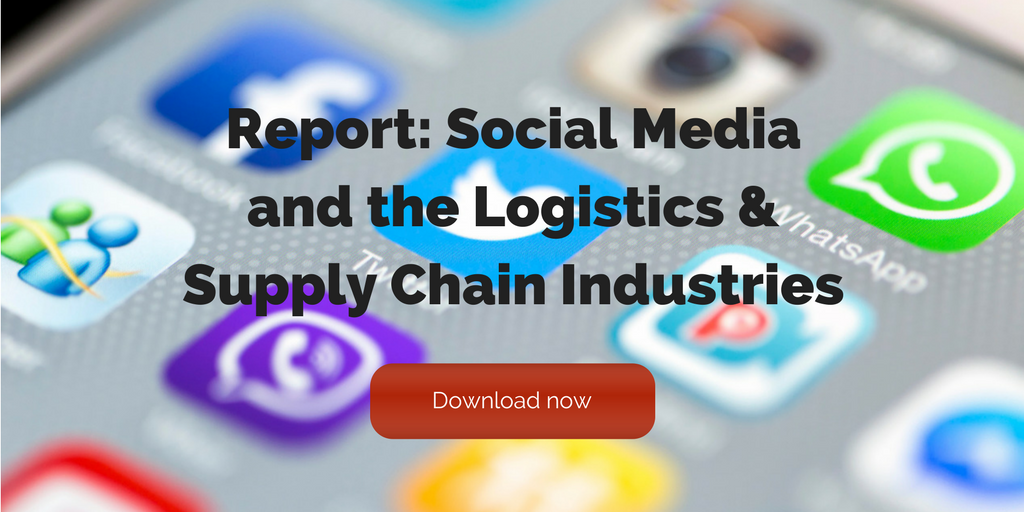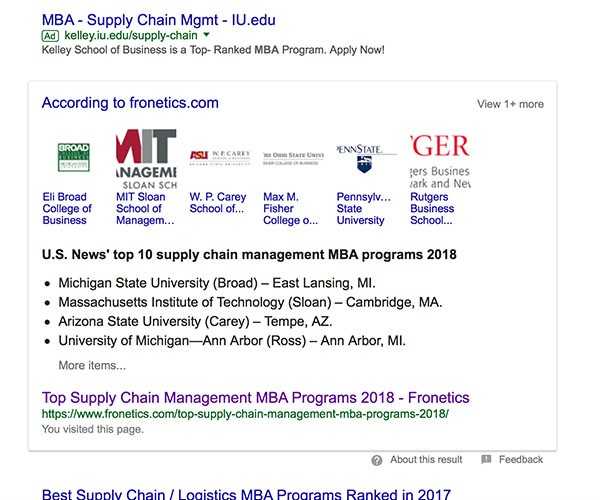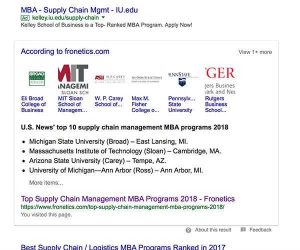
by Elizabeth Hines | Jan 4, 2018 | Blog, Current Events, Supply Chain, Transportation & Trucking
The FMCSA is not certifying ELD vendors’ products, which means carriers must ensure devices meet the organization’s technical specifications.
On December 18, new electronic logging device (ELD) regulations went into effect for commercial vehicle fleets across the U.S. The ELD mandate has caused major waves in the transportation industry. But it has the potential to rock supply chains and manufacturers around the globe — and not just because of anticipated transportation disruptions and increases in costs.
ELD manufacturers must comply with technical specifications outlined by the Federal Motor Carrier Safety Administration (FMCSA). They must also register their devices with the FMCSA. Motor carriers might assume that selecting a device that vendors are promoting as “FMCSA certified” would be a simple solution. Amazingly, however, that certification may not be worth the paper it’s printed on.
When does “certified” not mean “verified?”
Last year the FMCSA directed carriers to a site where they could find a list of registered ELDs. The problem with this is that the devices on this list are self-certified by the manufacturer. There’s no guarantee that they actually meet FMCSA guidelines.
To appear on the FMCSA’s list, ELD manufacturers must submit certain documents, including malfunction and diagnostics and product serial numbers. However, to gauge if their product is compliant, manufacturers must conduct their own tests. And the FMSCA is not vetting documentation of the testing.
The problem with this is fairly obvious. Without mandatory testing from a neutral, third-party source, devices are subject to only the rigor of their own manufacturer’s testing. They may not follow the FMCSA’s test specifications. And, of course, less-than-honorable manufacturers could use the lack of oversight to their advantage.
Consequences, however, will fall entirely on the shoulders of the operators and their carriers using non-compliant ELDs.
Compliant today, not tomorrow
Motor carriers purchase these systems under good faith that they will meet the FMCSA’s performance requirements once in use. But the possibility is looming that some ELDs may be noncompliant. Then what?
Carriers have eight days from the time an ELD is determined to be noncompliant to replace it with a compliant one. While drivers can temporarily use paper logs, this obviously isn’t a real solution, and will leave carriers scrambling to get their ducks in a row.
Due diligence
Before selecting an ELD vendor, carriers need to understand the details of compliance and hold vendors to those standards.
Carriers should push vendors for specific information about compliance with FMCSA test specifications. Or they should seek vendors who have opted to use third-party testing companies, such as PIT Group, to independently verify ELDs meet FMCSA standards. Either way, carriers should test and verify the ELDs they have chosen for their fleets on their own to ensure compliance as soon as possible.
The coming months are bound to see many headaches from the confusion caused by FMCSA-certified (but not regulated) ELD devices. Carriers need to be aware of this now, so they can properly prepare for any issues that may arise.
Related posts:

SaveSave

by Fronetics | Jan 3, 2018 | Blog, Content Marketing, Marketing
In part one of a four-part series on writing for SEO, we address how search engines and the search landscape have changed recently.
Content marketing has seen a lot of changes in the past few years. These changes are largely results of the rapidly evolving search landscape, as well as a seismic shift in the way people are actually discovering content. New, more sophisticated search algorithms, changes in the way people use search engines, and new ways that marketers develop their content are just a few of the contributing factors and outcomes.
Over the next few weeks, we’ll be writing a series of posts examining how marketers should approach writing for SEO in this new landscape. Today, we’re exploring specifically how search engines have evolved — something they are always doing, as they improve to help searchers find the content that best answers their queries.
Are keyword rankings still important?
It’s important to recognize that as search engines change the way they process and evaluate content, older metrics of SEO success aren’t as reliable as they used to be. Take keyword rankings for example. While conventional wisdom tells us that it’s absolutely necessary for content marketers to check their Google keyword rankings for target keywords, debate has swirled recently about the actual reliability of this metric.
Why is this once-standard metric being called into question? The answer is largely about context: Search engines have evolved beyond the point where everyone gets the same results of a query, and therefore rank can change drastically depending on context.
Location-based searches are one of the most obvious and important contextual variables. Simply put, depending on where you’re searching from, you’ll see different search results. This makes it difficult and unreliable to evaluate success based on keyword rankings alone.
Featured snippets
In addition to keyword-ranking problems, search engines are starting to dictate how content should be structured — particularly with the increased appearance of featured snippets. These snippets typically display content from within one of the pages ranking on page one of a question-based query, directly answering the question searched for without the user ever having to visit the actual page.

Fronetics has the featured snippet for Supply Chain Management MBA Programs.
A recent study found that of 1.4 million queries, 30% showed a featured snippet — that’s big growth. This means that content that ranks within the featured snippet section often gets a much greater share of the traffic for the given query. For content creators, this points to a need to restructure content to try to appear within these featured snippets.
Changes to the way search engines work do present a challenge for content creators writing for SEO. But keeping pace with the ever-changing technology is key to keeping your content relevant.
Make sure to check out part 2 in our series, Writing for SEO: People Are Changing How They Search, part 3, Writing for SEO: Topic Clusters and Pillar Content (NOT Keywords), and part 4, Writing for SEO: Measuring the Success of Your Content.
Related posts:

SaveSave

by Jennifer Hart Yim | Dec 21, 2017 | Blog, Strategy
Resumes are hard. Always have been, always will be. It’s hard to write and talk about yourself. It’s even harder to boil years – or even decades – of experience and accomplishments into a few short pages of text and visuals.
This guest post comes to us from Argentus Supply Chain Recruiting, a boutique recruitment firm specializing in Supply Chain Management and Procurement.
You’re probably more focused on your job than keeping a resume updated, and if a few years pass in between the times when you need a resume, you often find that resume trends have changed, and it’s hard to know how to format it, what to include, and what to leave out. It’s easy to feel lost because, of course, resume writing is one of the toughest tasks of any professional.
Let’s revise that slightly: it’s easy enough to write any old resume, but it’s difficult to craft a document that actually boosts your credibility.
A recruitment firm like Argentus is something of a resume clearing house. We see them all: the good, the bad, and the ugly. We see resumes that have up-to-the-minute style, as well as resumes where we have to brush off the cobwebs as we double click on the attachment in our inbox. We’re frankly bored of the latter. That’s why we’re doing a new miniseries on the Argentus blog, called The Quest for a Better Resume. We’re going to dive into some key aspects of resume writing and give examples to help you craft a resume that wows hiring managers and, hopefully, us!
In the first installment of this series, we gave some tips for boosting your resume’s style, which is something that sadly doesn’t get enough attention in fields like Supply Chain and Procurement.
Today, we’re going to dive into the Content side of things and help answer: if you’re a professional in Procurement, Supply Chain, or any of their related fields, what exactly should go on a resume and what doesn’t belong there?
Read on to hear our advice!
Resume Content:
Supply Chain and Procurement professionals make their careers by extracting relevant insights from complex sets of data. So it makes sense that they’re often skilled at loading their resumes up with valuable content – even if their resumes lack visual panache. The resumes we see tend to be stronger from a content perspective than an optics perspective – but there are still common shortcomings in terms of what people choose to write on a resume.
So when it comes to content, what does a bad resume look like?
Obviously, the worst resume is one that doesn’t show that the candidate has any relevant experience, or one that misrepresents that experience. But let’s take it for a given that you’re a professional with a solid background, trying to communicate the breadth of skills and work experience that you’ve accumulated:
- A bad resume tends to be overly stuffed with buzzwords. It tends to talk a lot without actually saying anything, full of words like “self-motivated,” “detail-oriented,” “team-player” – qualities that you shouldn’t have to put on a resume. These kinds of qualities are “table stakes” for getting an interview. They should be self-evident when the hiring manager speaks to you in person – on a resume, they come across as empty.
- It might tend to contain irrelevant experience, or show a lack of focus. This flavor of resume tries to be all things to all people – the resume equivalent of the job seeker who applies to every job we have, without tailoring their resume to one particular niche. We get that often people do have a wide variety of experience – some professionals at the director or VP-level have touched on every aspect of the Supply Chain, from inventory management to procurement to distribution. But you should tailor your experience to the role for which you’re applying.
- It talks about “duties fulfilled” instead of accomplishments. We’ve blogged a lot about how important it is to create an accomplishment-based resume. Bad resumes tend to read like job descriptions instead of describing what the person has delivered to their employers.
- It has extra info that isn’t relevant. Trends are always changing in terms of what info your resume should (and shouldn’t) include, and it can be hard to keep up. But as of late 2017, headshots, marital status, personal info, and links to multiple social media profiles are distractions from what’s important.
With these common shortcomings in mind, what approach should Supply Chain and Procurement professionals take when trying to write a resume that impresses?
- Show, don’t tell. This old writer’s adage is also the best rule of thumb both for avoiding buzzwords and packing your resume full of impressive accomplishments instead of squandering the precious few seconds that a hiring manager will dedicate to your resume. Don’t just say that you’ve “increased cost savings,” show the amount of money that you’ve saved, and how you did it. Speak in terms of numbers: how many people did you oversee? What size of budget were you responsible for? Don’t just say you have “exceptional communications skills,” show it by presenting a resume that’s concise.
- Include the meat, not the fat. As recruiters in Procurement and Supply Chain, there are a few pieces of vital information we’re looking for when assessing a resume – beyond the accomplishments we mentioned above: if you’re in Supply Chain, what aspects have you touched on? (e.g. inventory management, logistics, warehousing, distribution, sourcing). What software do you have experience and skills with? (e.g. SAP, ARIBA). If you’re in Procurement, what categories have you purchased in? (e.g. raw materials, information technology, marketing, etc.) This is key information that sometimes gets lost within long bullet-pointed lists of “duties.”
- Less can be more. Similar to how white space is important from a visual perspective, concision is key when it comes to content. Try to write your resume with more action verbs and fewer adjectives.
If you’re like us, you’ve probably noticed that a lot of the resume advice floating around the internet is distressingly general – shouldn’t it be obvious that resumes need to avoid typos, grammatical mistakes, and incorrect contact information? So hopefully these tips give a bit more detail about how to approach a resume’s content in a blue-sky way.
Related posts:


by Fronetics | Dec 20, 2017 | Blog, Talent
Here are our most-viewed blog posts from 2017 about talent, including tips on retaining your top talent and helping turn your employees into brand ambassadors.
The start of the new year brings along a host of resolutions. Finding a new job or advancing in a current position are common new year’s resolutions for individuals. For companies, identifying new strengths and interests within your employees and hiring and retaining great talent are common goals.
We’ve assembled our top 10 talent posts of 2017. We hope these posts help you and/or your company overcome challenges, and achieve your goals for next year.
Top 10 most popular talent posts of 2017
1. Gender Diversity is Not a Women’s Issue: It’s an Economic Issue
Gender diversity is generally viewed as a women’s issue. It is not. Research conducted by McKinsey & Company and LeanIn.org finds that despite corporate America’s stated commitment to gender diversity, outcomes are not changing. Moreover, the research finds that employees do not believe companies are taking the necessary steps to enact change. Read more.
2. Top Supply Chain Management MBA Programs 2018
Looking for talent? Try recruiting from these top-rated supply chain management MBA programs and schools. We have written before about the importance of recruiting and strengthening the relationship between academia and the supply chain industry as means to solve the growing supply chain talent gap. If your company is looking to hire, consider strengthening your rapport with schools that offer supply chain programs or specialties. Read more.
3. Are We Thinking About “Soft Skills” All Wrong?
By calling them “soft skills,” are we shortchanging competencies that are critical for supply chain and procurement professionals to succeed? One of the biggest stories in the world of Supply Chain and Procurement talent over the past few years has been the emerging importance of Soft Skills. As the field has become more strategic — with a greater impact on wider areas of business — professionals in the field have had to become stronger at advocating for it. Read more.
4. Great Supply Chain People Are Getting Harder to Find, But Do Companies Have a Talent Management Issue?
Is the Supply Chain talent gap problem really a talent management problem? This guest post from Argentus explores the so-called “talent deficit” in the field from all angles and perspectives. The fact is, it’s becoming harder for companies for find the talent that they need for these positions as baby boomers retire and the function evolves. Read more.
5. Employee Brand Ambassadors Can Influence B2B Buying Decisions
As peer influence becomes increasingly important in B2B buying decisions, empowering employee brand ambassadors will benefit your bottom line. I’ve written lately about the rise of influencer marketing. It’s a strategy B2B businesses are starting to understand and use to their advantage. But you don’t need a Kardashian or even an important industry professional to get started. Employees are your most natural, ready-made influencers. Read more.
6. Freight Driver Shortage Update: Will 2017 Come to a Head and Cause Issues for Shippers?
Growing woes over a forthcoming capacity crunch are not going away anytime soon. But, the capacity crunch may have a major impact on the freight driver shortage and vice versa. In a sense, fewer drivers mean that capacity will grow tighter. Yet, as capacity shrinks, the incentive for drivers increases. Read more.
7. 3 Ways to Attract Millennial Talent for the Supply Chain
Hoping to draw more millennials to your talent pool? Implementing these three ideas might help win them over. By the year 2020, millennials are estimated to make up a majority of the workforce. In addition, a 2014 study found that 46% of B2B buyers were millennials, and that number is on the rise. This seismic shift in workplace demographics calls for a new approach to attracting and retaining talent. Read more.
8. 3 Questions to Ask before Making a Professional Change and Overcommitting
Thinking of making a professional change? Here are some questions to consider before taking the plunge and overcommitting. We’ve all been asked to take on new projects at work when we’re already completely swamped. In the moment, it can be very hard to say no. And we’ve all jumped on LinkedIn to see what other opportunities are out there. More money, less headaches. The grass is always greener. Read more.
9. Could Liberal Arts Grads Fill the Supply Chain Talent Gap?
Mark Cuban thinks liberal arts grads will be the next in-demand employees. Could they be the answer to the supply chain talent gap? The supply chain talent gap has been called a “perfect storm.” Every report cites doomsday statistics of the impending crisis when, by 2025, 60 million baby boomers will exit the workforce, leaving only 40 million millennials to take their place. Read more.
10. Three Tips for Retaining Your Top Talent
Investing in your top talent and playing an active role in developing their careers will motivate them to stay around. Company loyalty is a thing of the past. In today’s day and age, everyone is looking for the next best thing, and that is true in the workplace as well. But this doesn’t mean that retention of top talent is hopeless. Read more.
Related posts:


by Fronetics | Dec 19, 2017 | Blog, Marketing
Email is one of the most utilized tools in your marketing toolbox, but marketers need to continuously develop their email practices to keep up with the rapidly changing interests of audiences.
Email marketing is a powerful tool for growing and developing your business. You probably get hundreds of marketing emails from all kinds of companies you patronize (and even those you don’t) every day. So you know as well as anyone that not all email marketing is created equal.
Especially in B2B culture, there is a right way — and many wrong ways — to do email marketing. Our blog hit on many best practices in 2017 that are important for B2B marketers to keep in mind as they create marketing emails.
Here are the top 7 email marketing posts for 2017.
1. 7 Email Marketing Tips for Manufacturers and Industrial Companies
Here are seven tips for manufacturers to improve your email marketing strategy in the manufacturing and industrial sector. Many manufacturers and industrial companies are still stuck in the one-off batch and blast mode of email marketing. That strategy is not likely to work very well in industrial marketing, where most of the purchases include complex products with long sales cycles, multiple decision-makers, and stakeholders are involved. Read more.
2. 7 Techniques for Personalizing Marketing Emails and Boosting Engagement
Personalizing marketing emails increases open rates, click-throughs, and revenue, but it takes so much more than addressing recipients by name. Marketers can use information they have about subscribers to tailor email content for individuals, based on who they are or where they are in the buyer’s journey. Read more.
3. 4 Email Marketing Stats that Prove You Spend Too Much Time Creating Emails
Email marketing can be a challenge — to say the least. The constantly changing email landscape, marketing trends, and privacy regulations can make staying on top of your email game very tough. Take a look at these 4 statistics and why streamlining and automating certain aspects of your email marketing program might free you up to focus on factors that can make a difference. Read more.
4. Increase Revenue from Marketing Emails by 760% with This One Trick
Email list segmentation is the one of the simplest and most critical practices to improving marketing email performance. Marketing emails are an important part of lead nurturing: They can make or break whether a lead becomes a sale. So marketers spend a lot of time and money thinking about how to perfect their messages. Read more.
5. 5 Biggest Email Subject Line Mistakes to Avoid
Email marketers, beware: If you’re tasked with writing compelling emails to capture online customers, the subject line — the headline of your message — is the first and main spot to grab the viewer’s attention. But, while a cleverly written subject can boost open rates and click-throughs, a poorly written one can have the opposite effect. Read more.
6. Three Marketing Email Crimes to Avoid
Are your marketing emails annoying your customers and prospects? We’ve all felt it: the visceral annoyance on opening an email — because it’s the fifth one from the same company in two days, or because it’s packed with hyperbole or an off-putting sales pitch. As it turns out, recent research has shown that this reaction is only too natural. We’re predisposed to view the tone of email more negatively than it was written. Read more.
7. Mobile-Friendly Emails: 6 Tips for Success
Use these 6 tips for more mobile-friendly emails to improve recipient engagement rates and to promote profitable customer action. When a majority of your audience is reading your marketing emails on their mobile devices, it’s imperative that you’re creating emails that are optimized for mobile viewing. Here are 6 essential tips for creating mobile-friendly email campaigns. Read more.
Related posts:








